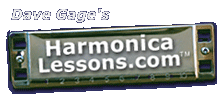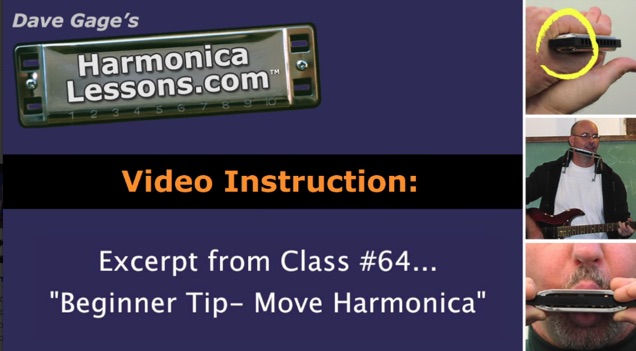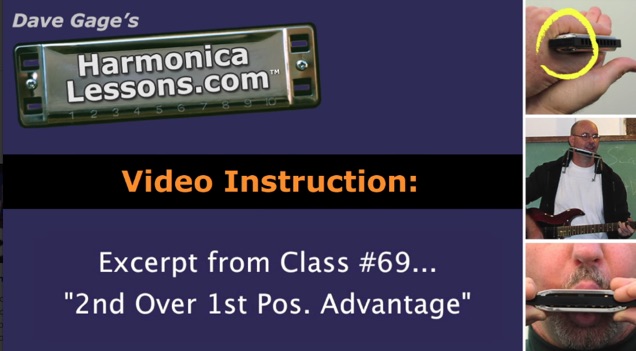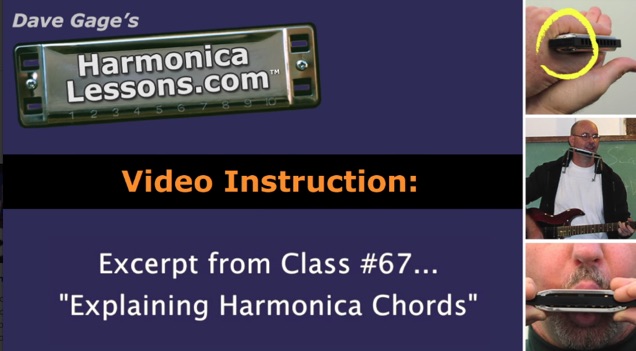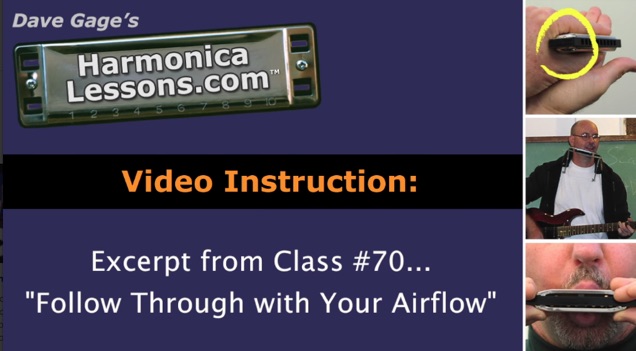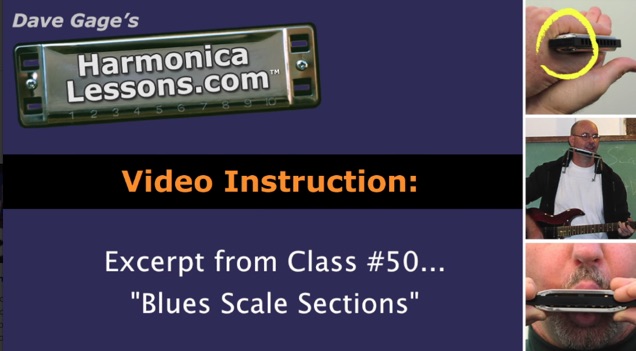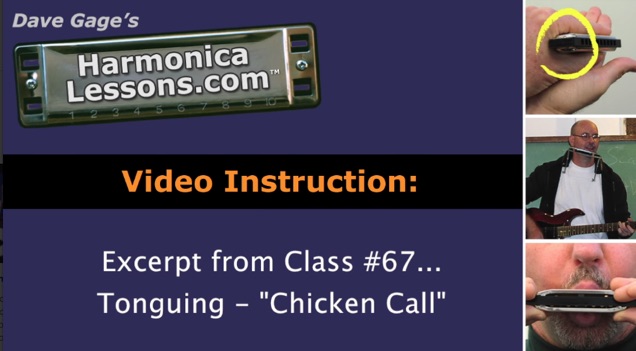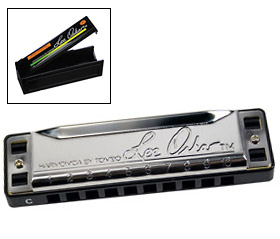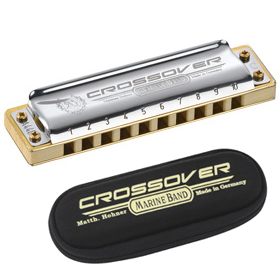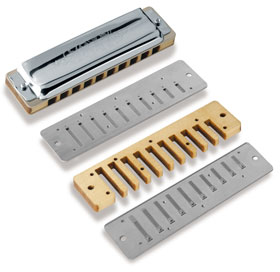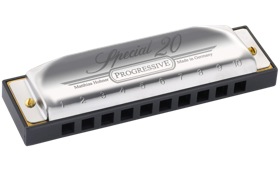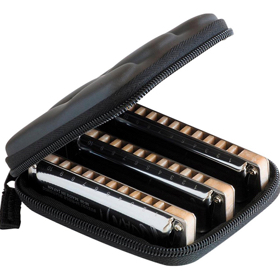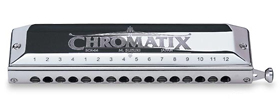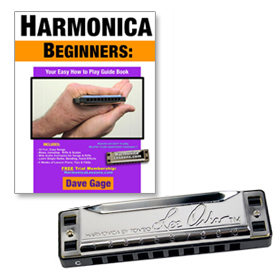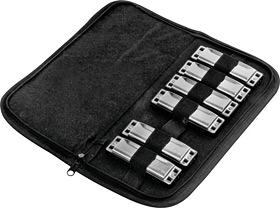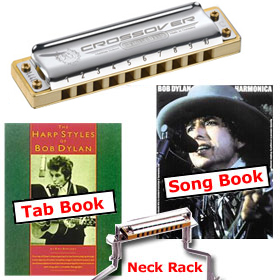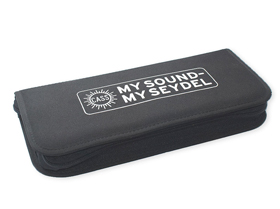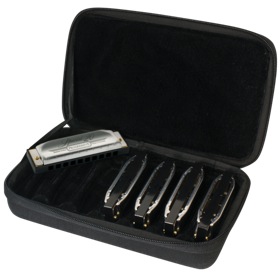Harmonica Types Defined
Aside from the standard diatonic and chromatic harmonicas, most other types are for special purposes or special effects and not as commonly used. But, this doesn't mean that aren't fun to play. You can purchase any of these type harmonicas by clicking on the photo or it's category name. Scroll down the page for harmonica type details.
 |
Diatonic- The standard 10-hole major diatonic harmonicas come in all 12 keys of music and allow you to play a complete 7-note major scale of the key of the harmonica. Many additional notes from outside the major scale can be acquired by "bending" certain draw (inhale) and blow (exhale) notes. Most professionals are predominantly diatonic players. Diatonic harmonicas are typically used in blues, rock, country, and folk, but can also be found in nearly all styles of music. They are sometimes referred to as a "blues harp", "harp", "short harp", or "standard 10-hole". In terms of price and overall quality, we like the Lee Oskar Major Diatonic and the Hohner Special 20, in the key of "C", best for players just starting out. The Lee Oskar harmonicas also feature the 1st Position and 2nd Position keys printed on the ends of each diatonic for easy reference. |
 |
Chromatic- The chromatic harmonica has a button on the side, which when NOT used, allows you to play a normal major scale in the key of the chromatic. With the button depressed, you have all the missing half-step notes in-between the major scale notes. This allows you to play in any key and any type of scale. The chromatic is typically used in jazz and classical music, but is found in all styles of music. Bending doesn't work nearly as well on the chromatic as it does on the diatonic harmonica and when used, is used more for a "bending effect". In most cases, you will be doing good to bend a note a half-step down. Learn more about playing chromatic harmonica in the Chromatic Harmonica section. |
 |
Tremolo- Tremolo harmonicas are Diatonic models constructed with double holes (sometimes 8, 10, 12, or more sets of double holes), each containing two reeds tuned to the same note, one tuned slightly higher than the other. Since both reeds are either blow or draw, when played, both will sound together and the slight difference in tuning creates a vibrating or tremolo effect. The tremolo harmonicas are primarily used for special effects. They are not made to play blues, bend notes, or do anything other than play the most simple melodies. Depending upon the particular model and brand, the major scale would begin on the 3rd or 4th set of holes, and then the pattern would be the same as the diatonic major scale pattern in relation to blows and draws. These harmonicas are not recommended for our instruction. |
 |
Octave Tuned- "Octave harmonicas are similar to Tremolo models in reed layout and musical range. Instead of having reeds tuned to the same note, however, each double hole has one reed tuned an octave apart from the other. The resulting sound is stronger and full bodied, but without the tremolo effect. This is the harmonica equivalent of a twelve-string guitar (sort-of)." These harmonicas are not recommended for our instruction. |
 |
Special Tuned Diatonics- For players that do not play chromatic harmonica, but may have the need for additional notes and scales in their playing, they can pick up a special tuned (actually re-tuned from the standard major scale tuning) diatonic. Tunings include: natural minor scale, harmonic minor scale, major scale 2nd position tuned (Lee Oskar calls them "Melody Makers" and Hohner calls them "Country tuned"), and "high octave" (key of "G") and "low octave" (low D, Eb, E, F, and F#) tuned. These harmonicas are not recommended for our instruction. |
 |
Other Types- Additional types of harmonicas are available for special purposes like harmonica trios, groups, or orchestrals. Most of these are made by the Hohner Company, but other companies may carry some as well. This group includes: bass harmonicas, chord harmonicas, Polyphonias, and miniture 4-hole harmonicas. These harmonicas are not recommended for our instruction. |
If you haven't yet done so, we recommend you take a look at the Beginners Start Here and General Overview sections for additional information.
